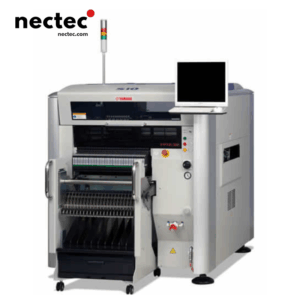In the rapidly evolving world of electronics manufacturing, efficiency and precision are the keys to staying ahead of the competition. One of the most critical components in Surface Mount Technology (SMT) assembly is the PCB SMT conveyor. As a manufacturer, you may be asking yourself, “What exactly is a PCB SMT conveyor, and how can it enhance my production line?” This guide aims to demystify this pivotal equipment while helping you understand its importance in the SMT process.
What is a PCB SMT Conveyor?
A PCB SMT conveyor is designed specifically for the transport of printed circuit boards (PCBs) during the surface mount assembly process. This conveyor is an integral part of the SMT production line, facilitating the movement of PCBs between various machines such as solder paste printers, pick-and-place machines, and reflow ovens. Unlike standard conveyors, PCB SMT conveyors come equipped with specialized features that accommodate the delicate nature of PCBs.
Key Features of PCB SMT Conveyors
- Variable Speed Control: Most PCB SMT conveyors offer adjustable speed settings to accommodate different production rates and ensure optimal control during the manufacturing process.
- Alignment Features: With side rails and guiding mechanisms, these conveyors ensure that the PCBs remain properly aligned throughout the transportation process, minimizing the risk of damaging the boards.
- Modular Design: Many PCB SMT conveyors are designed to be modular, allowing manufacturers to customize layouts to suit specific needs and space constraints.
- Cleanroom Compatibility: For high-precision manufacturing, many conveyors can be designed for cleanroom environments, preventing contamination during the SMT process.
- Integration with Automation: Modern PCB SMT conveyors can seamlessly integrate with other automated systems, including robotics, for enhanced efficiency.
The Importance of PCB SMT Conveyors in Manufacturing
PCB SMT conveyors play a crucial role in enhancing the overall manufacturing process. Here are some of the core benefits they offer:
Improved Efficiency
With their ability to operate at adjustable speeds, PCB SMT conveyors help reduce bottlenecks within the production line. This translates to a more streamlined workflow, as the conveyors can adjust to the pace of other machinery. Manufacturers can produce more units in less time without compromising quality.
Enhanced Safety
The innovative design of PCB SMT conveyors reduces the risk of PCB damage during transportation. By ensuring that boards are properly aligned and secured, manufacturers can prevent costly errors and rework that can slow down production timelines. In high-speed environments, safety measures, such as emergency stop buttons and guards, further protect operators from injury.
Choosing the Right PCB SMT Conveyor for Your Needs
When selecting a PCB SMT conveyor, it’s essential to consider several factors to ensure you choose the right model for your manufacturing process.
Production Volume
Evaluate your production volume to determine the conveyor system’s required speed and width. It’s essential to ensure that the conveyor can handle the PCB sizes you regularly utilize.
Integration Requirements
Consider how the conveyor will fit into your existing assembly line. Check compatibility with other machines and whether additional modifications will be needed for a seamless integration.
Space Availability
Take measurements of your available workspace. Depending on the layout of your factory, you may need a straight conveyor, a curved model, or even a modular system that can be configured to fit your space effectively.
Budget Considerations
Budget is always a consideration for manufacturing equipment. While it might be tempting to opt for the cheapest model, it’s crucial to evaluate the features and capabilities offered, ensuring the investment will pay off in terms of improved efficiency and quality.
Maintenance of PCB SMT Conveyors
Although PCB SMT conveyors are generally robust, regular maintenance is vital to ensuring consistent performance. Here are some essential maintenance tips:
- Regular Cleaning: Dust and debris can accumulate, impacting performance over time. Schedule regular cleanings to maintain optimal operation.
- Inspect Moving Parts: Regularly check belts, gears, and alignment to detect any wear and tear. Addressing these issues early can prevent significant problems later.
- Lubrication: Keep moving parts adequately lubricated to ensure smooth operations and extend the life of the equipment.
- Calibrate Speeds: Periodically recalibrate the speed settings and alignment features to ensure they continue to meet production requirements.
Future Trends in PCB SMT Conveyors
The future of PCB SMT conveyors looks promising with the integration of advanced technology. Below are some key trends on the horizon:
Smart Conveyors
With the rise of Industry 4.0, manufacturers are increasingly adopting smart technologies. These conveyors can provide real-time data on performance metrics, enabling better decision-making and greater efficiency in the manufacturing process.
AI and Machine Learning
Artificial Intelligence (AI) and machine learning technologies are finding their way into PCB assembly processes. These intelligent systems can optimize the speed and efficiency of conveyors based on current production demands.
Sustainability Efforts
As sustainability becomes a priority for manufacturers, the design and operation of PCB SMT conveyors are evolving towards greener practices. This includes energy-efficient motors and recyclable materials in their construction.
The Bottom Line
PCB SMT conveyors are more than just a logistical necessity; they are a transformative element of the SMT production process. By understanding their features, benefits, and maintenance requirements, manufacturers can leverage these conveyors to enhance their operations, boost product quality, and maintain a competitive edge. Embracing the future trends in conveyor technology will only broaden the possibilities for efficiency and innovation in your manufacturing process.






